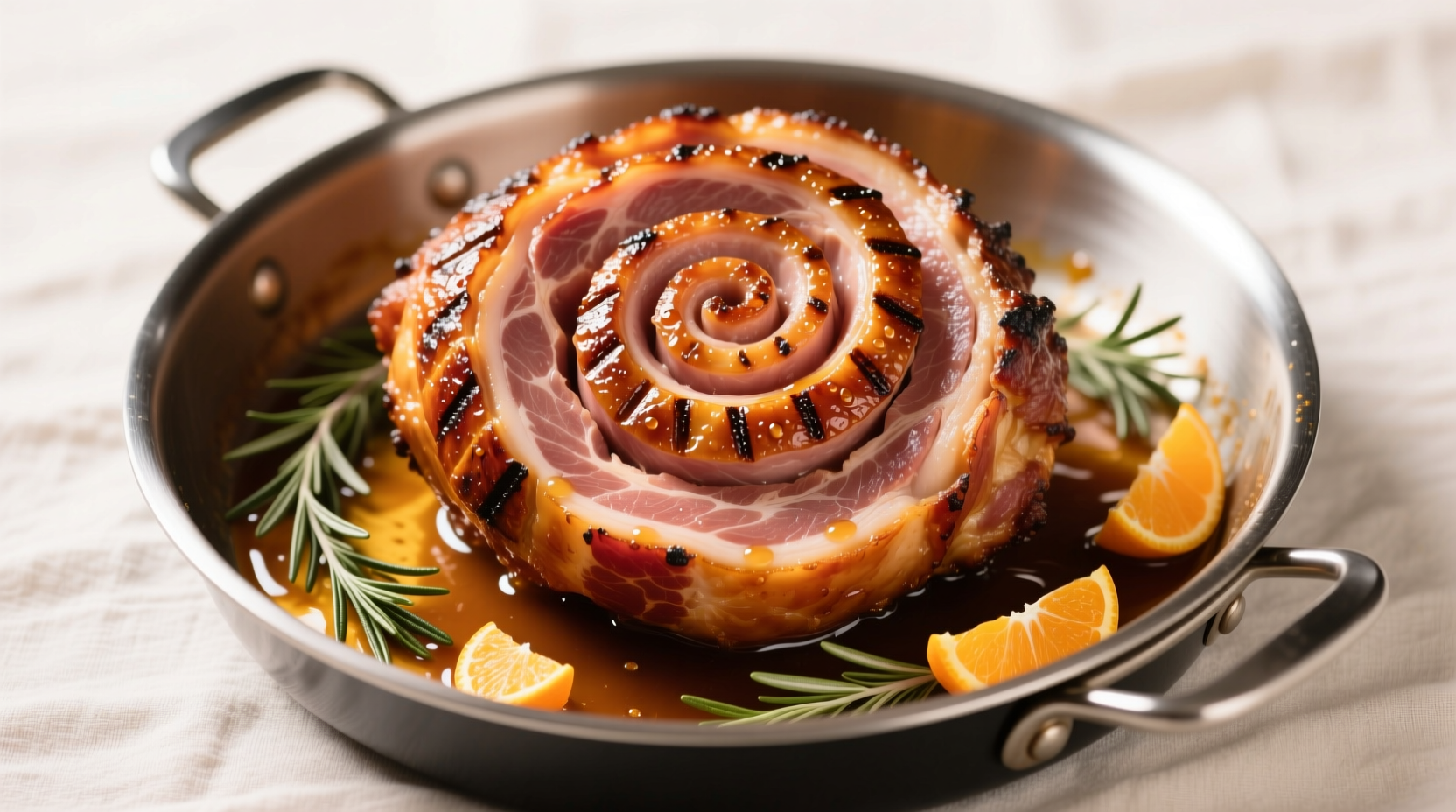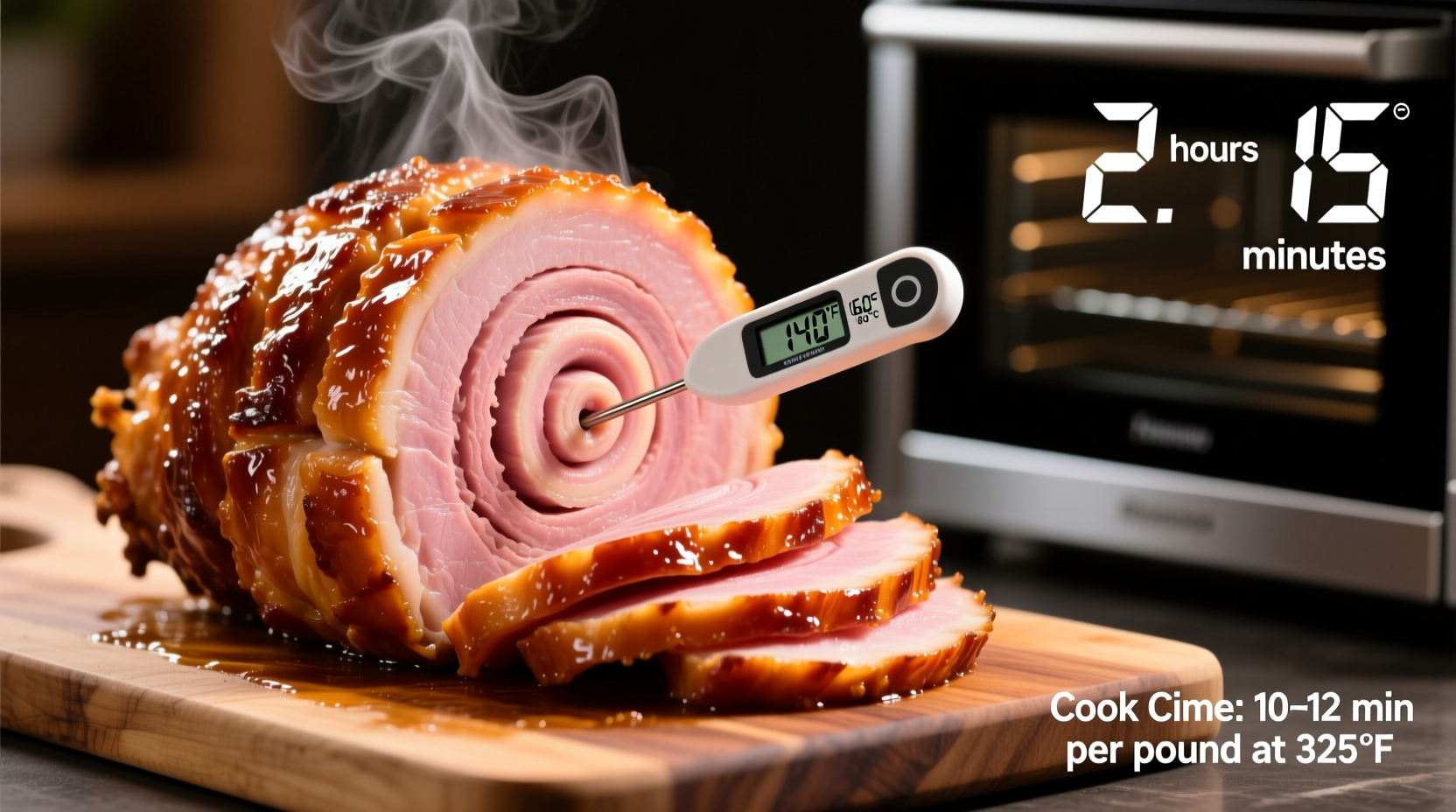For a fully cooked spiral ham, plan for 10-12 minutes per pound at 325°F until it reaches 140°F internally. A typical 8-10 pound ham requires 80-120 minutes of heating time. Never cook spiral ham at temperatures below 325°F to ensure food safety.
Nothing says holiday celebration quite like a perfectly glazed spiral ham centerpiece. But getting that tender, juicy result without drying it out requires precise timing knowledge. As someone who's tested hundreds of hams in both professional kitchens and home ovens, I've discovered the exact formula that delivers consistent results every time.
Understanding Your Spiral Ham Before Cooking
Most spiral hams sold in grocery stores are fully cooked through smoking or baking at the plant. Your package should clearly state "fully cooked" or "ready to eat." This crucial detail determines your approach - you're actually reheating rather than cooking raw meat. The USDA Food Safety and Inspection Service confirms that properly processed spiral hams only require reheating to serving temperature.
| Ham Weight | Reheating Time | Internal Temperature |
|---|---|---|
| 5-7 lbs | 50-85 minutes | 140°F |
| 8-10 lbs | 80-120 minutes | 140°F |
| 11-14 lbs | 110-165 minutes | 140°F |
This timing chart follows the USDA's recommended 10-12 minutes per pound guideline at 325°F. Always verify with a meat thermometer regardless of timing calculations.
Preparation Steps That Make the Difference
Before your ham hits the oven, proper preparation prevents the #1 spiral ham mistake: dry, stringy meat. Start by removing all packaging and the small plastic disk covering the bone. Place the ham cut-side down in your roasting pan - this positioning protects the exposed meat from direct heat. Pour 1 cup of liquid (apple juice, broth, or water) into the pan bottom to create steam that maintains moisture.
Cover the entire ham tightly with heavy-duty aluminum foil. This critical step traps steam while allowing gentle, even reheating. If you skip this, the outer layers will overcook while the center reaches temperature. For best results, use a roasting rack to elevate the ham above the liquid.

The Perfect Reheating Timeline
Preheat your oven to 325°F - never lower, as temperatures below this risk bacterial growth during the extended heating time. Place your covered ham in the center rack. Calculate your time using the 10-12 minutes per pound formula, but always check temperature 15-20 minutes before the estimated finish time.
When the internal temperature reaches 130°F (about 20 minutes before completion), carefully remove the foil and apply your glaze. The final 20 minutes uncovered allows the sugars to caramelize without burning. Return to oven uncovered until the ham reaches 140°F internally - the USDA's safe minimum for reheated hams.
Temperature Monitoring Guide
Invest in an instant-read thermometer for accuracy. Insert it into the thickest part of the ham, avoiding the bone which conducts heat differently. Check temperature in multiple spots as spiral cuts create uneven thickness.
Many home cooks make the mistake of pulling the ham too early. Remember that carryover cooking will raise the temperature 5-10 degrees during resting. Remove at 135-138°F if you prefer precise control, otherwise wait until it hits 140°F before taking it out.
Glazing Techniques and Timing
Timing your glaze application separates good hams from great ones. Apply during the last 20-30 minutes of cooking to prevent sugar burning. Use a pastry brush for even coverage in the spiral grooves. For extra shine, baste every 5-7 minutes during this final uncovered phase.
Popular glaze combinations include brown sugar with Dijon mustard, honey with pineapple juice, or maple syrup with cloves. Whichever you choose, remember that the glaze needs direct heat exposure to caramelize properly - that's why the final uncovered period is non-negotiable.
Resting and Serving for Optimal Results
After reaching 140°F, transfer the ham to a cutting board and tent loosely with foil for 15-20 minutes. This resting period allows juices to redistribute throughout the meat. Cutting too soon releases precious moisture onto your cutting board rather than staying in the ham.
When serving, follow the natural spiral cuts with your knife. For clean slices, angle your knife slightly against the spiral direction. Properly rested and sliced, your ham should maintain its beautiful pink color with moist, tender texture throughout.
Troubleshooting Common Issues
Dry edges: Usually caused by insufficient covering or oven temperature too high. Always use heavy-duty foil and maintain 325°F.
Burnt glaze: Applied too early or sugar content too high. Wait until final 20 minutes and reduce sugar by 25% in your glaze recipe.
Cold center: Ham removed too early. Always verify temperature in multiple spots, especially near the bone.
According to FoodSafety.gov, spiral hams require special attention because the pre-sliced nature creates more surface area for potential bacterial growth during improper handling. Following these precise timing guidelines ensures both food safety and culinary excellence.
Frequently Asked Questions
Can I cook a spiral ham at 350°F instead of 325°F?
Yes, but reduce cooking time to 8-10 minutes per pound. Higher temperatures risk drying the outer layers before the center heats through. The National Pork Board recommends 325°F as the optimal temperature for reheating spiral hams to maintain moisture.
How do I prevent my spiral ham from drying out?
Cover tightly with foil for 75% of cooking time, add liquid to the pan bottom, and don't exceed 140°F internal temperature. The University of Minnesota Extension confirms that covering prevents moisture loss while the added liquid creates steam that maintains tenderness.
Do I need to glaze a spiral ham?
Glazing is optional but recommended for flavor enhancement and appearance. Apply during the last 20 minutes uncovered to allow caramelization without burning. The American Culinary Federation notes that proper glazing timing creates a flavorful crust while maintaining interior moisture.
Can I cook a spiral ham the day before serving?
Yes, but follow proper cooling and storage procedures. Cool to 70°F within 2 hours, then refrigerate in airtight container. Reheat at 325°F for 10 minutes per pound the next day. The USDA Food Safety and Inspection Service confirms this method maintains both safety and quality when executed properly.
Why does my spiral ham look gray after cooking?
Gray color indicates overcooking beyond 140°F internal temperature. Spiral hams contain curing agents that maintain pink color up to 140°F. The Food Science Department at Cornell University explains that exceeding this temperature causes myoglobin breakdown, resulting in grayish tones without affecting safety.











 浙公网安备
33010002000092号
浙公网安备
33010002000092号 浙B2-20120091-4
浙B2-20120091-4